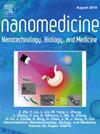Machine learning-driven Raman spectroscopy: A novel approach to lipid profiling in diabetic kidney disease
IF 4.6
2区 医学
Q2 MEDICINE, RESEARCH & EXPERIMENTAL
Nanomedicine : nanotechnology, biology, and medicine
Pub Date : 2025-02-01
DOI:10.1016/j.nano.2025.102804
引用次数: 0
Abstract
Diabetes mellitus is a chronic metabolic disease that increasingly affects people every year. It is known that with its progression and poor management, metabolic changes can lead to organ dysfunctions, including kidneys. The study aimed to combine Raman spectroscopy and biochemical lipid profiling, complemented by machine learning (ML) techniques to evaluate chemical composition changes in kidneys induced by Type 2 Diabetes mellitus (T2DM). Raman spectroscopy identified significant differences in lipid content and specific molecular vibrations, with the 1777 cm−1 band emerging as a potential spectroscopic marker for diabetic kidney damage. The integration of ML algorithms improved the analysis, providing high accuracy, selectivity, and specificity in detecting these changes. Moreover, lipids metabolic profiling revealed distinct variations in the concentration of 11 phosphatydylocholines and 9 acyl-alkylphosphatidylcholines glycerophospholipids. Importantly, the correlation between Raman data and lipids metabolic profiling differed for control and T2DM groups. This study underscores the combined power of Raman spectroscopy and ML in offering a low-cost, fast, precise, and comprehensive approach to diagnosing and monitoring diabetic nephropathy, paving the way for improved clinical interventions. However, taking into account small number of data related to ethical committee approvals, the study should be verified on a larger number of cases.

机器学习驱动的拉曼光谱:糖尿病肾病脂质分析的新方法。
糖尿病是一种慢性代谢性疾病,每年都有越来越多的人受到影响。众所周知,随着病情的发展和管理不善,代谢变化可导致包括肾脏在内的器官功能障碍。该研究旨在结合拉曼光谱和生化脂质分析,辅以机器学习(ML)技术来评估2型糖尿病(T2DM)引起的肾脏化学成分变化。拉曼光谱发现了脂质含量和特定分子振动的显著差异,其中1777 cm-1波段成为糖尿病肾损伤的潜在光谱标记。ML算法的集成改进了分析,在检测这些变化时提供了高精度、选择性和特异性。此外,脂质代谢谱显示11种磷脂酰胆碱和9种酰基烷基磷脂酰胆碱甘油磷脂的浓度有明显变化。重要的是,拉曼数据与脂质代谢谱之间的相关性在对照组和T2DM组中有所不同。这项研究强调了拉曼光谱和ML在提供低成本、快速、精确和全面的糖尿病肾病诊断和监测方法方面的联合能力,为改进临床干预铺平了道路。然而,考虑到与伦理委员会批准相关的少量数据,该研究应在大量病例上进行验证。
本文章由计算机程序翻译,如有差异,请以英文原文为准。
求助全文
约1分钟内获得全文
求助全文
来源期刊
CiteScore
11.10
自引率
0.00%
发文量
133
审稿时长
42 days
期刊介绍:
The mission of Nanomedicine: Nanotechnology, Biology, and Medicine (Nanomedicine: NBM) is to promote the emerging interdisciplinary field of nanomedicine.
Nanomedicine: NBM is an international, peer-reviewed journal presenting novel, significant, and interdisciplinary theoretical and experimental results related to nanoscience and nanotechnology in the life and health sciences. Content includes basic, translational, and clinical research addressing diagnosis, treatment, monitoring, prediction, and prevention of diseases.

 求助内容:
求助内容: 应助结果提醒方式:
应助结果提醒方式:


